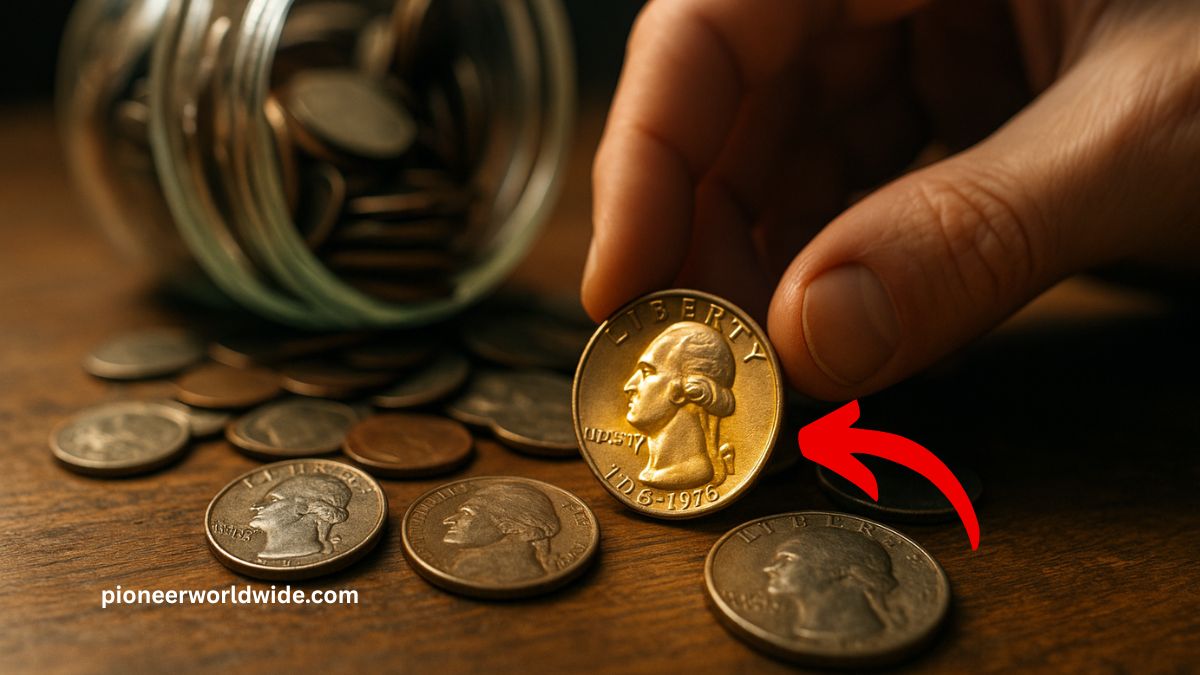Discover the fascinating world of Bicentennial quarters and why rare error coins—like a $300,000 specimen—are sending shockwaves across the numismatic community.
If you’re casually sorting through change, these five valuable coins could change your life.
$300,000 Bicentennial Quarter
- Type: Circulating 1776–1976 quarter with major mint error
- Error Traits: Likely double strike, blurry overlapping design, or struck on wrong planchet
- Significance: Mistakes like this are exceedingly rare, elevating its value to half a million in collector sales
1976‑S Clad Proof Deep Cameo Quarter
- Mint: San Francisco (“S”)
- Grade: PR 70 DCAM
- Metal: Copper‑nickel clad
- Auction High: Approximately $920 for top-grade examples
1976‑D Clad Doubled‑Die Obverse (DDO)
- Mint: Denver (“D”)
- Error: Noticeable doubling on obverse
- Grade: MS 66
- Recent Sale: Around $8,400 at auction
1976‑S Silver Proof Deep Cameo Quarter
- Mint: San Francisco (“S”)
- Metal: 90% silver, proof DCAM
- Grade: PR 70
- Record Sale: $2,760 in 2007
1976 Quarter Graded MS 68 by PCGS
- Type: Circulating copper-nickel clad
- Grade: Mint State 68
- Auction Record: $6,462.50 (Heritage Auctions)
Top 5 Valuable Bicentennial Quarters
| # | Coin Type | Mint | Metal / Error | Grade / Condition | Recent Value |
|---|---|---|---|---|---|
| 1 | $300K Quarter | P/D/S | Major mint error | Uncirculated | $300,000 |
| 2 | 1976‑S Clad Proof DCAM | S | Clad, cameo finish | PR 70 | $920 |
| 3 | 1976‑D Clad DDO | D | Clad, doubled die | MS 66 | $8,400 |
| 4 | 1976‑S Silver Proof DCAM | S | 90% silver | PR 70 | $2,760 |
| 5 | 1976 Clad MS 68 | – | Clad | MS 68 | $6,462.50 |
Why These Coins Are Worth Big
- Mint errors: e.g., double strikes, double-die obverses, and wrong planchet strikes are rare and highly prized.
- High proof grades: Especially PR 70 DCAM, indicating perfect strike and mirror fields.
- Metal content: Silver‑clad issues fetch higher prices due to intrinsic melt value plus collectible demand.
- Scarcity: Some variants—like the 1976‑S silver proof—had limited mintages (~4.9 M uncirculated, 4 M proofs).
Tips to Spot Valuable Bicentennials
- Check for mint marks: S = San Francisco, D = Denver, P = Philadelphia (no mark).
- Look closely for errors: Doubling, misalignment, blurry details, odd metal color.
- Assess condition: Perfect coins (MS 67–68 or PR 69–70) bring the biggest returns.
- Use a loupe: Detect deep cameo contrast or faint doubling not visible by naked eye.
- Grade certification: Have suspicious coins slabbed by NGC/PCGS for valuation.
Your everyday coin jar might be hiding a numismatic treasure! With rare error quarters like the $300,000 specimen and top‑graded proofs valued in the thousands, it pays to inspect your change.
Focus on mint marks, finishing, and grading potential, and consider professional certification. Who knows—the next big find could be resting in your pocket!
FAQs
How likely is it to find a $300,000 quarter in everyday change?
Extremely unlikely—those quarters show major mint errors and have only been found a handful of times. Most circulated quarters won’t come close in value.
Should I send my coin for grading?
Yes—if your coin appears near‑perfect (MS 67+ or PR 69+), professional grading is crucial to establish and maximize its market value.
Where can I sell a rare Bicentennial quarter?
The best venues are established auction houses like Heritage, online platforms with slab authentication (e.g., eBay with PCGS/NGC), or dedicated coin dealers.
